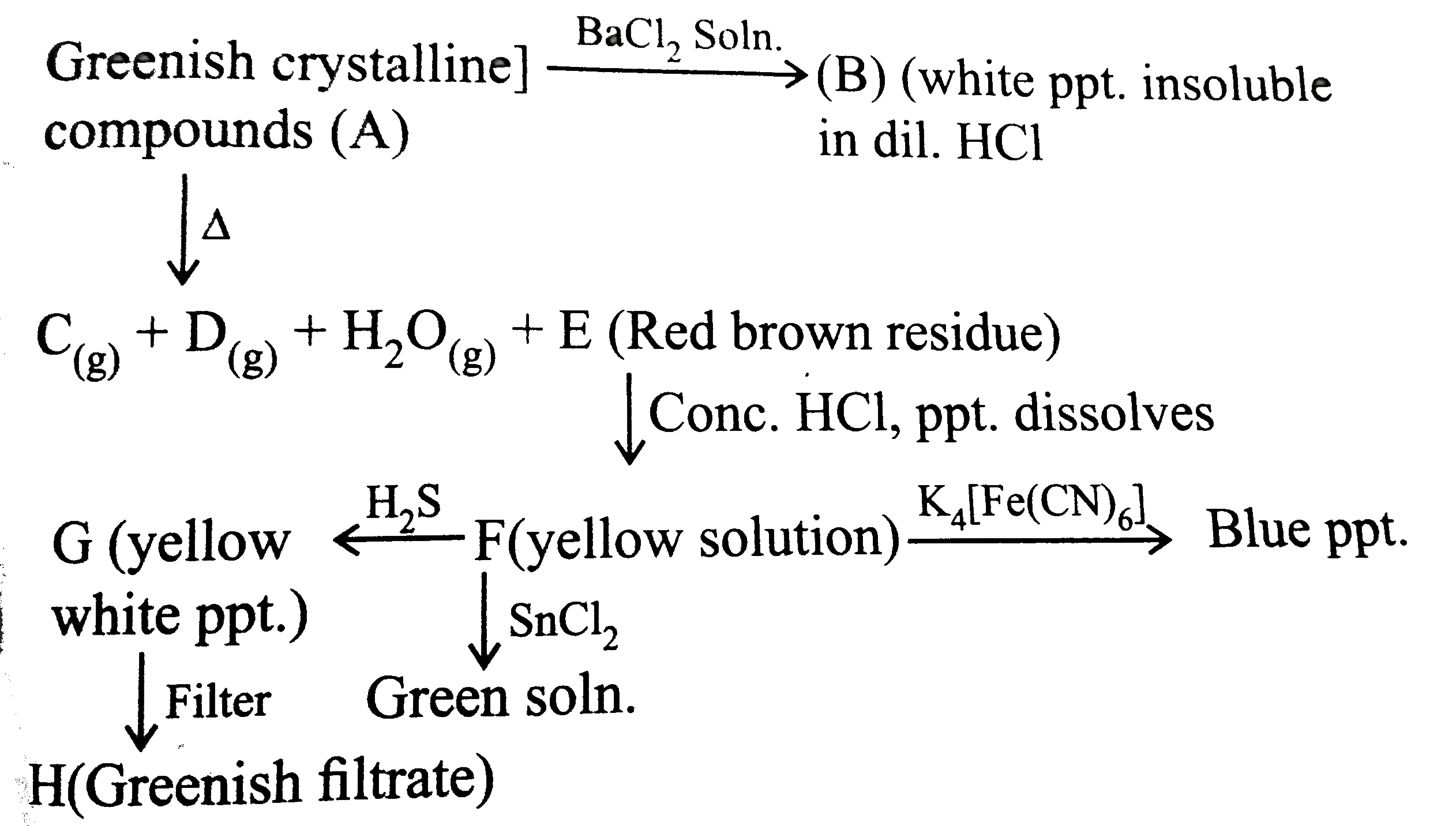
Gases C and D are
The correct Answer is:a
(A) is
Topper's Solved these Questions
- QUALITATIVE INORGANIC SALT ANALYSISBOOK - CENGAGE CHEMISTRY ENGLISHCHAPTER - QUALITATIVE INORGANIC SALT ANALYSISEXERCISE - Exercises (Multiple Correct) Part-A (Analysis Of Anions)
30 Videos
- QUALITATIVE INORGANIC SALT ANALYSISBOOK - CENGAGE CHEMISTRY ENGLISHCHAPTER - QUALITATIVE INORGANIC SALT ANALYSISEXERCISE - Exercises (Multiple Correct) Part-B (Analysis Of Cations)
28 Videos
- QUALITATIVE INORGANIC SALT ANALYSISBOOK - CENGAGE CHEMISTRY ENGLISHCHAPTER - QUALITATIVE INORGANIC SALT ANALYSISEXERCISE - Solved Example
11 Videos
- P-BLOCK GROUP 18 ELEMENTS - THE INERT GASESBOOK - CENGAGE CHEMISTRY ENGLISHCHAPTER - P-BLOCK GROUP 18 ELEMENTS - THE INERT GASESEXERCISE - Ex 5.1 (Objective)
14 Videos
- REDUCTION AND OXIDATION REACTION OF ORGANIC COMPOUNDSBOOK - CENGAGE CHEMISTRY ENGLISHCHAPTER - REDUCTION AND OXIDATION REACTION OF ORGANIC COMPOUNDSEXERCISE - SUBJECTIVE TYPE
4 Videos
Similar Questions
Two gases A and B which react according to the equation
aA(g)+bB(g)→cC(g)+dD(g)
to give two gases C and D are taken (amount not known) in an Eudiometer tube (operating at a constant Pressur and temperature) to cause the above.
If one causing the reaction there is no volume change observed then which of the following statement is/are correct.
View SolutionThe volumes of gases A, B, C and D are in the ratio, 1:2:2:4 under the same conditions of temperature and pressure.
Which sample of gas contains the maximum number of molecules?
View SolutionThe volumes of gases A, B, C and D are in the ratio, 1:2:2:4 under the same conditions of temperature and pressure.
If this ratio of gas volumes refers to the reactants and products of a reaction, which gas law is being observed?
View SolutionThe volumes of gases A, B, C and D are in the ratio, 1:2:2:4 under the same conditions of temperature and pressure.
If the temperature and the pressure of gas A are kept constant, then what will happen to its volume when the number of molecules is doubled?
View SolutionThe volumes of gases A, B, C and D are in the ratio, 1:2:2:4 under the same conditions of temperature and pressure.
If the volume of A is actually 5.6 dm at STP, calculate the number of molecules in the actual volume of D at STP (Avogadro's number is 6×1023)
View SolutionThe volumes of gases A, B, C and D are in the ratio, 1:2:2:4 under the same conditions of temperature and pressure. If the volume of A is actuaally 5.6 dm3 at s.t.p calculate the number of molecules in the actual volume of D ate s.t.p
Using your answer from (iv), state the mass of D if the gas is dinitrogen oxide (N2O)
. (N = 14, O = 16)
View SolutionABC and DBC are two isosceles triangles on the same bas BC and vertices A and D are on the same side of BC . If AD is extended to intersect BC at P, show that ABD ≅ACD (ii) ABP ≅ACP
View SolutionCritical temperatures for A, B, C and D gases are 25∘C,10∘C,−80∘C and 15∘C respectively. Which gas will be liquefied more easily ?
View SolutionIf a, b, c and d are four coplanr points, then prove that [abc]=[bcd]+[abd]+[cad].
View SolutionIf C and D are two events such that C⊂DandP(D)≠0 , then the correct statement among the following is : (1) P(C∣D)=P(C) (2) P(C∣D)≥P(C) (3) P(C∣D)<P(C) (4) P(C∣D)=P(D)/(P(C)
View Solution
